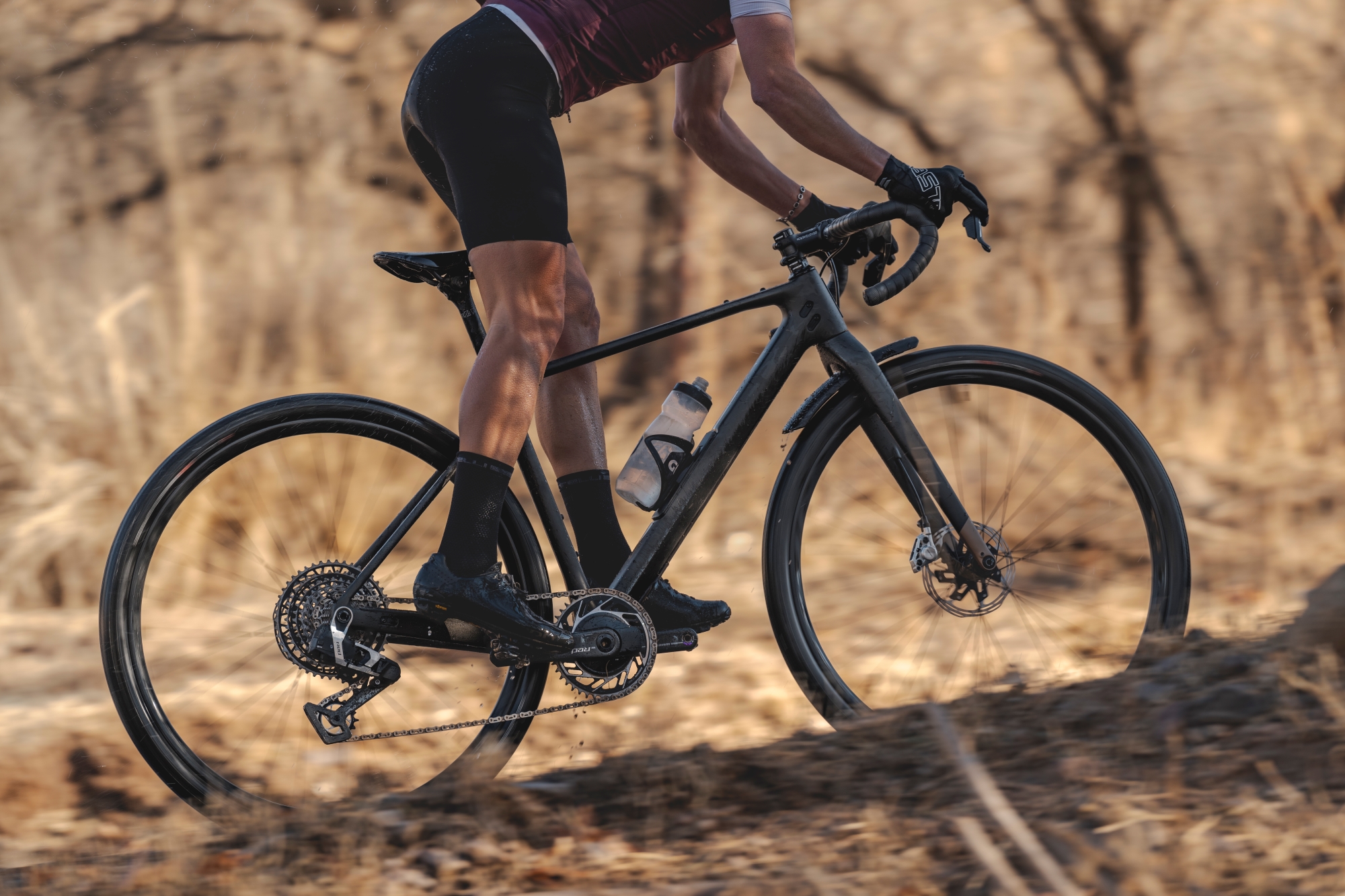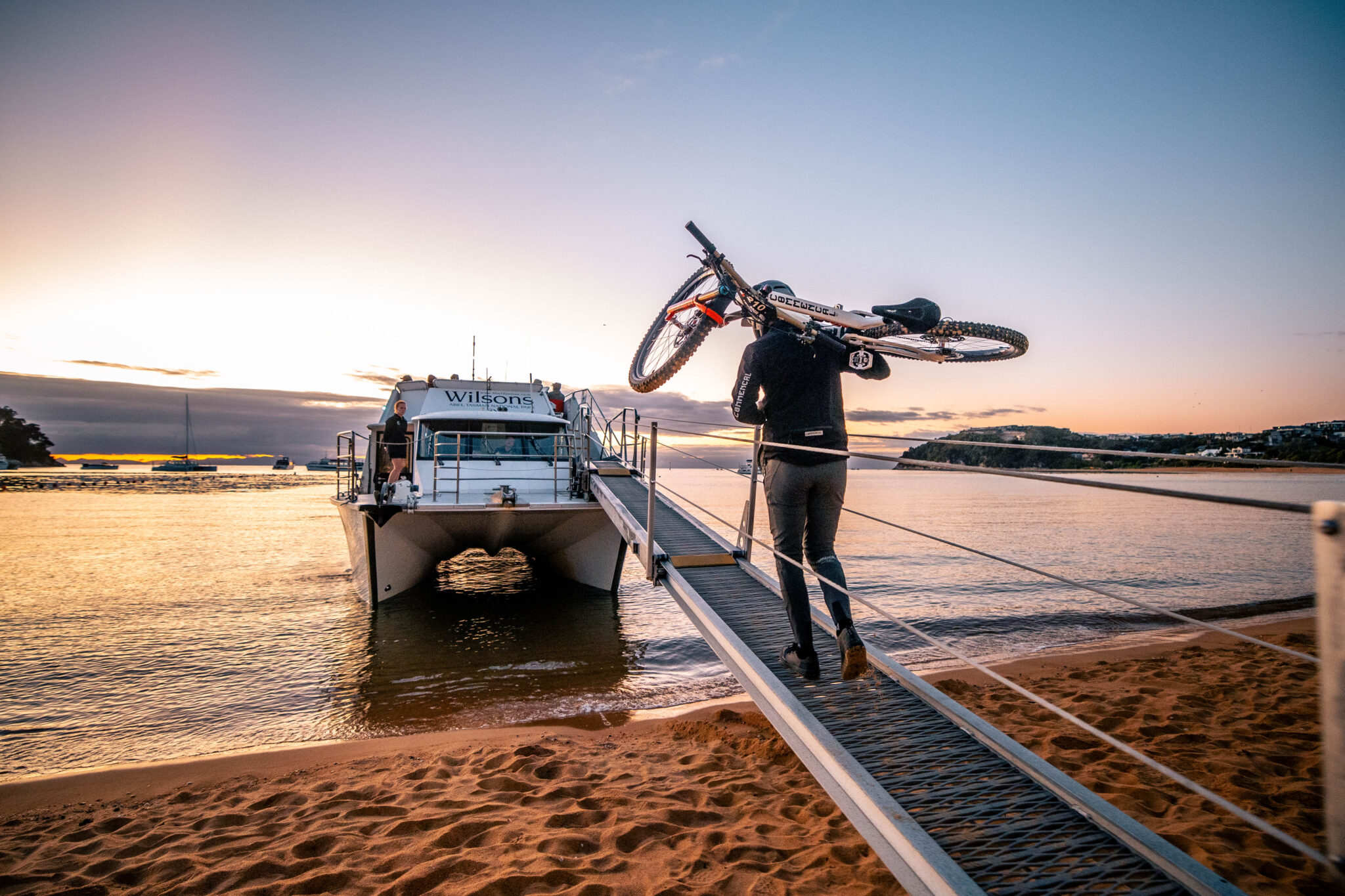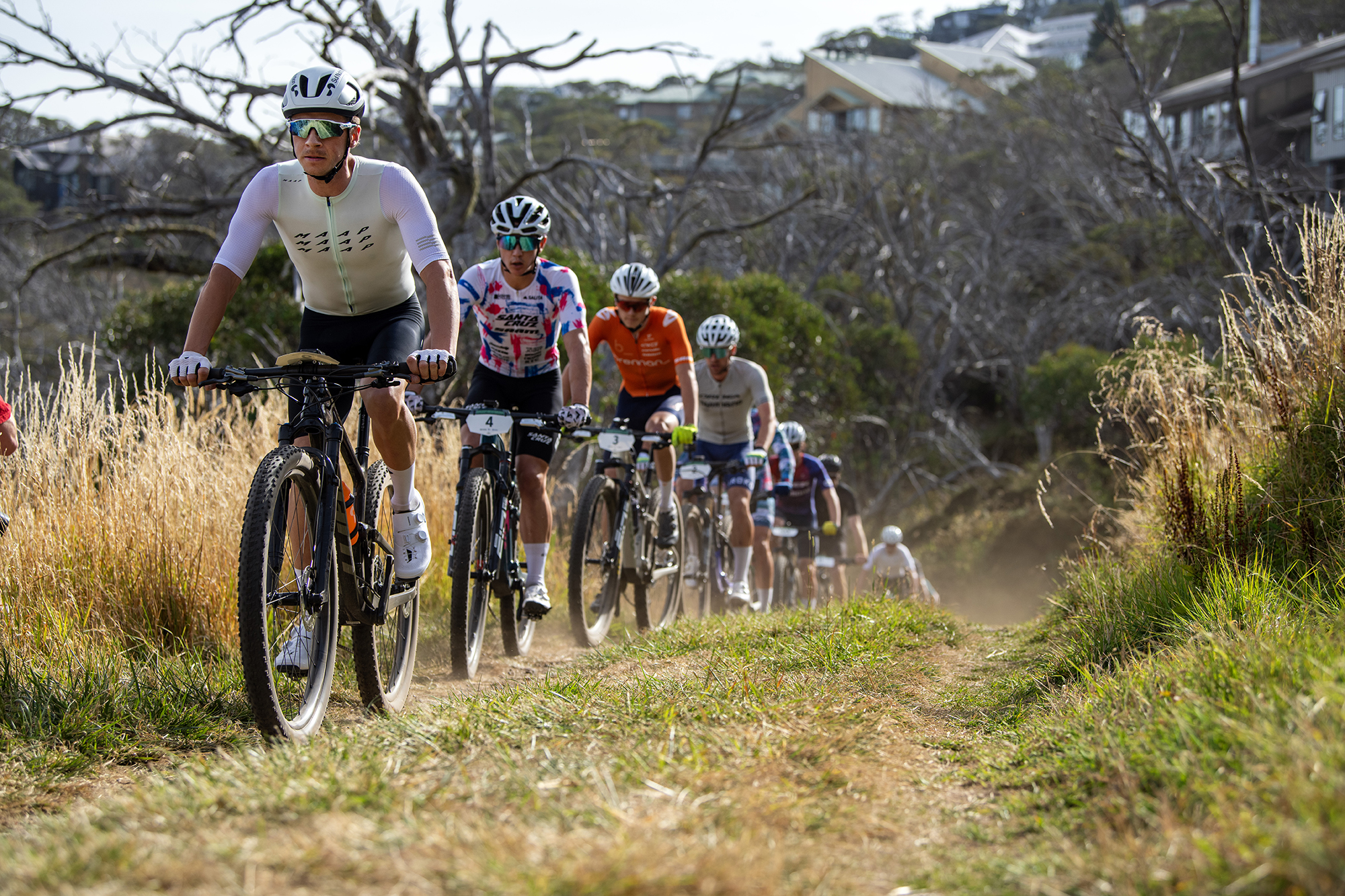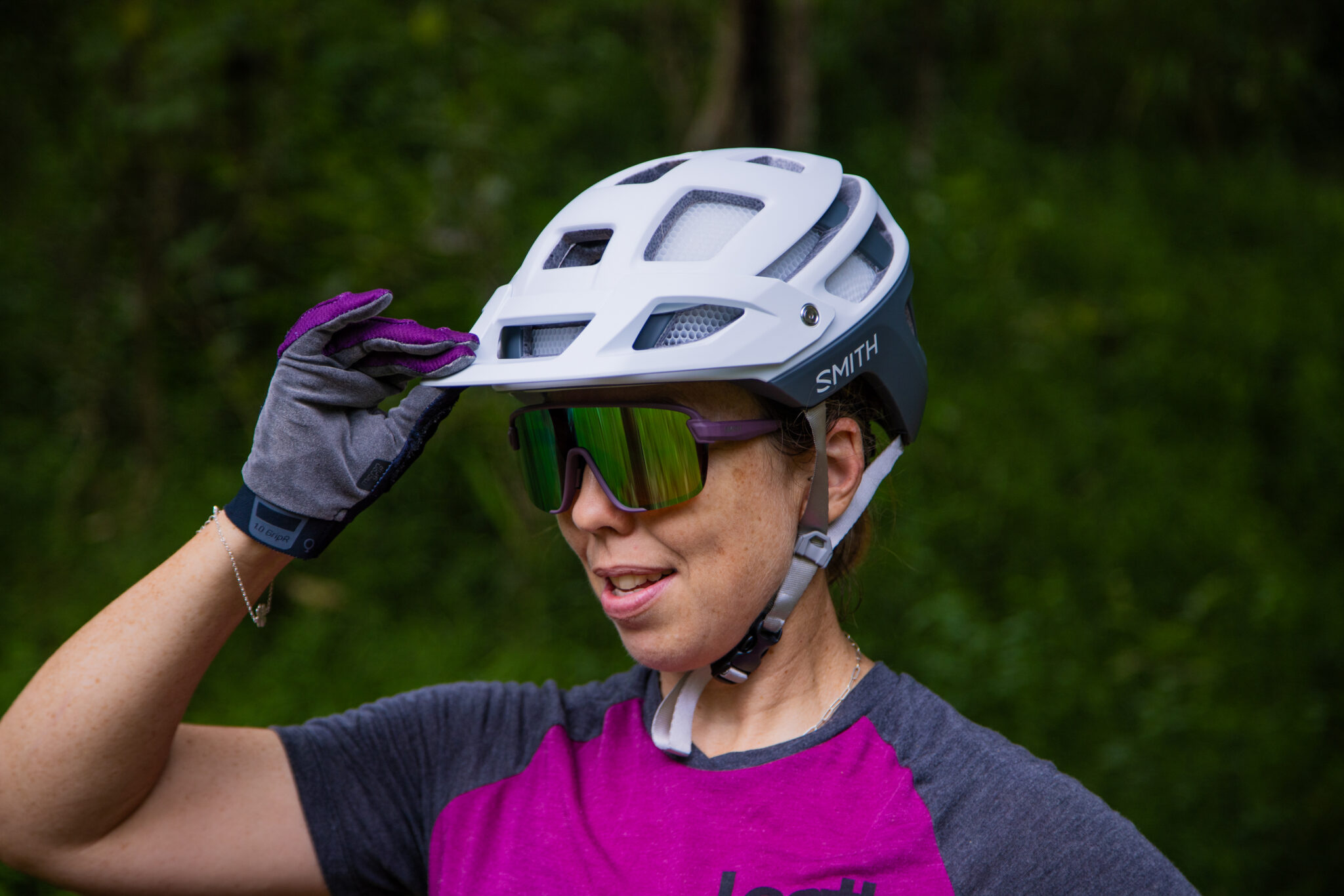Upskilling at the pump track
Hayden Wright outlines why the pump track is the perfect place to hone your skills.
Words: Hayden Wright
Photos: Chris Dalziel
Some of my fondest memories as a kid were racing home from school so that I could meet my best mate Tom for an afternoon ride. The 3:15pm Samford line bus ride would seem like an eternity as I knew that at my destination lay hours of fun digging and riding our local jumps. Fuelled by potato chips and lime cordial, Tom and I would spend countless hours at the park honing our skills trying to emulate the riding we had seen on Fuel TV, which inspired us to pick up a shovel in the first place.
The kickers may have better resembled termite mounds, and our choice of safety equipment was often questionable… but that didn’t stop the fun. For years we repeated the same narrative and garnered the same results: hours of endless fun. Unfortunately, as time moved on and school turned to full time employment it became much more difficult to get out on the dirt jumper mid-week. The 3pm school bell had been swapped for 3pm conference calls; dead sailors swapped for deadlines; a cold lime cordial for a hot long black. It seemed my little Nukeproof Snap was destined to a life gathering cobwebs, neglected in the corner of the garage. That was until 18 months ago, when the Brisbane city council opened the Darra BMX facility.
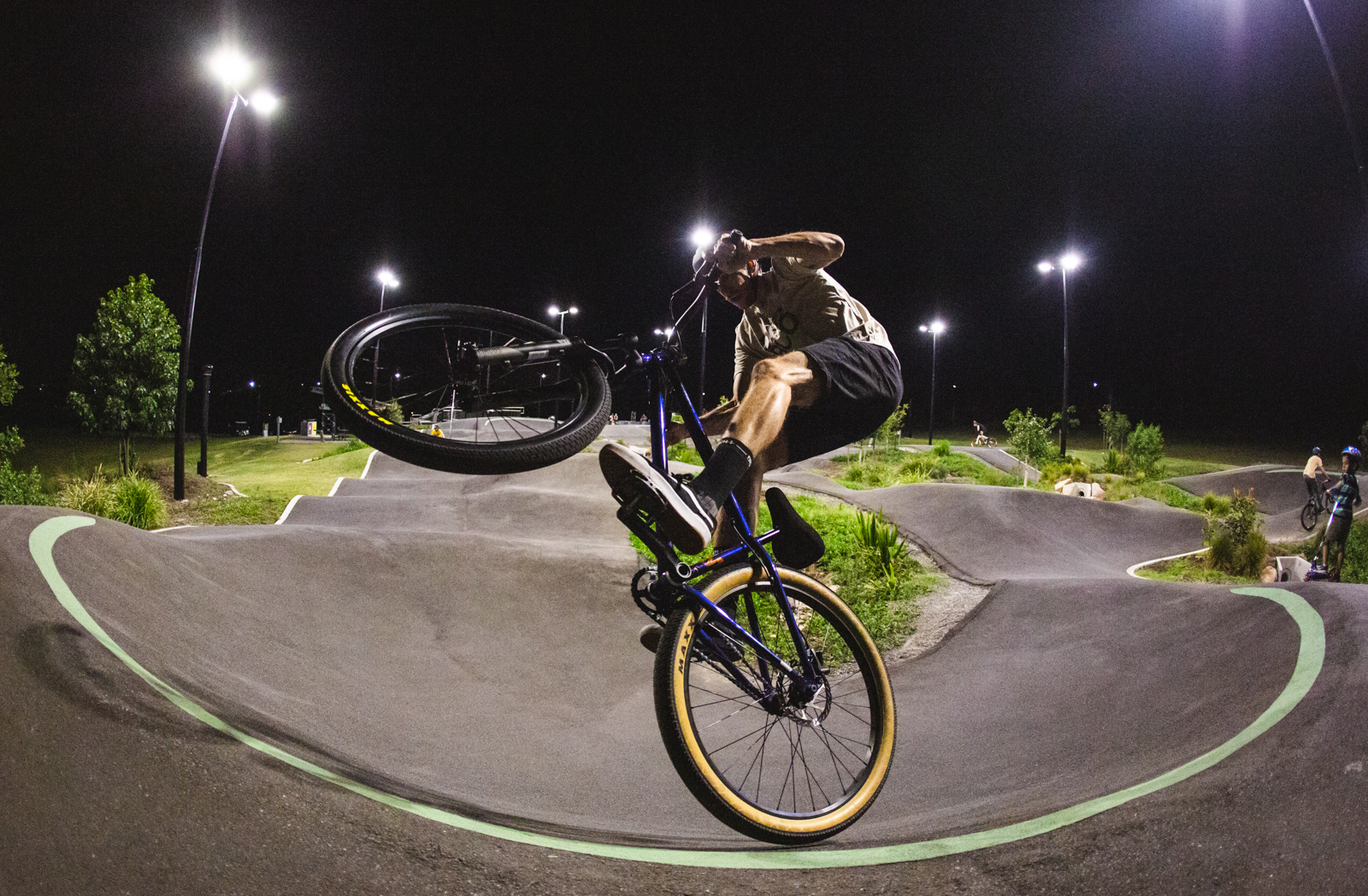
Don’t let the name fool you, this facility is a suburban pump track – the biggest one on the East Coast of Australia at that. The $2.3 million facility sprawls over the size of a football field and caters for riders of all skill levels and ages, with two main pump track loops which came to fruition following a consultation and design period which included residents, councillors, designers and riders. While the inclusion of toilets, water fountains and shade shelters are noteworthy assets to this development, the jewel in this facilities’ crown is the inclusion of over a half-dozen LED sports lights, keeping the pump track well-lit and open for riding until 9pm 365 days a year. At the flick of a light switch I had the ability to re-live my forgotten youth, rushing home from work to meet all my riding mates for our weekly pump track session.
There were two things that were both blindingly obvious following our first few sessions:
1) We all need to re-learn how to jump a bike without a rear shock
2) We all need to re-learn how to ride on flat pedals
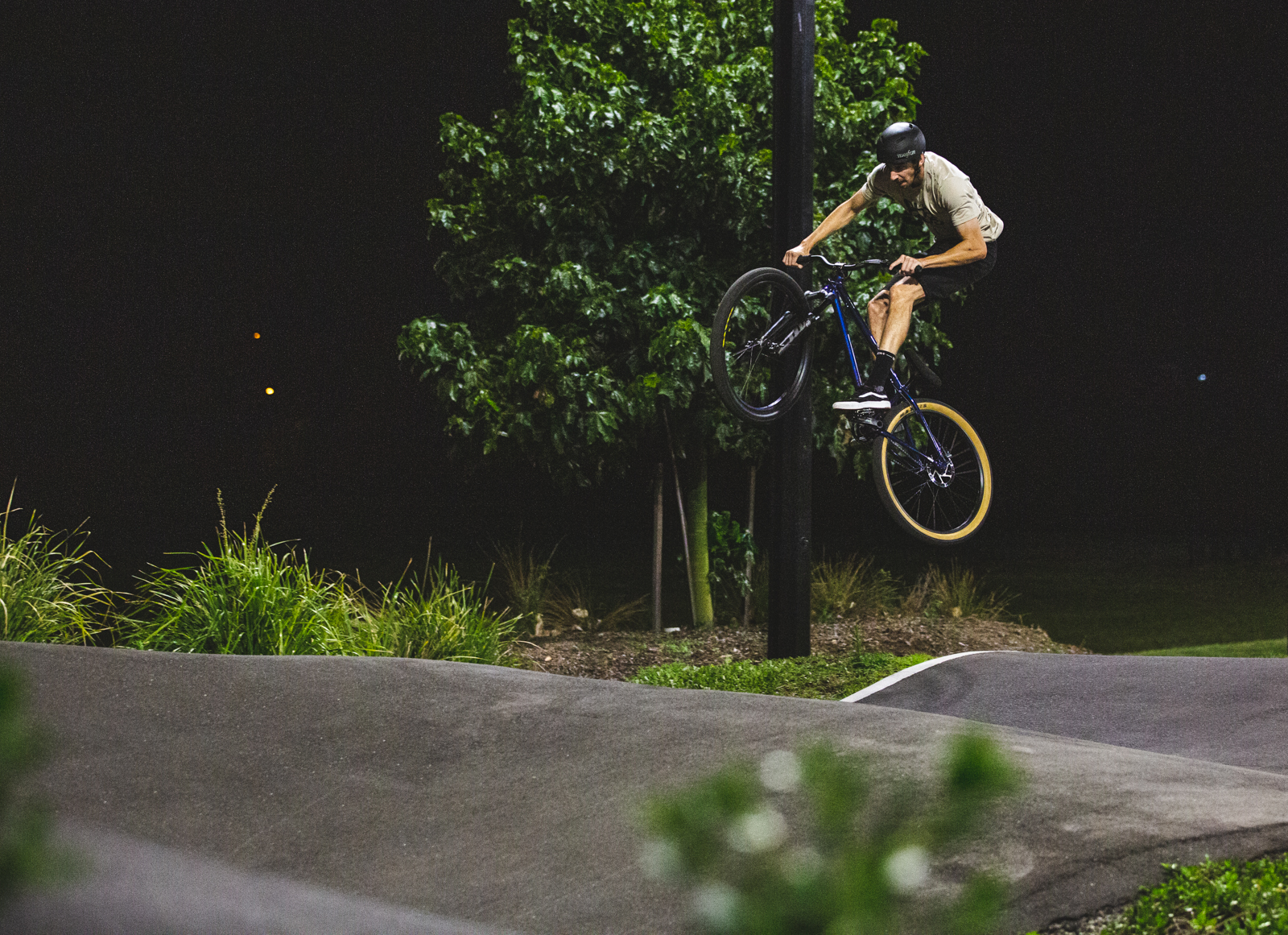
It seemed that a decade of riding predominantly enduro and downhill bikes on clipless pedals had left our fundamental skills lacking in some key areas. The ability to hop, tuck, manual and boost on what felt like such small agile bikes without the safety net of having your feet attached to the pedals was something which was going to have to be re-learnt. This, however, is where pump tracks really come into their own. They reward technical proficiency over everything. The fastest and smoothest riders you will see at your local pump track are the ones who are the absolute best at the basics of riding a mountain bike – pumping, jumping and most importantly cornering. If you can nail these few basic techniques you will soon find that rollers become doubles, gaps become more conceivable and the entire pump track seems to flow as one seamless riding playground.
Crank it up another notch like Darra local Max Warsawsky and you will end up spending most of your time gracefully flying high above the ribbon of pristine asphalt which we mere mortals call home, only touching your wheels to the ground as an exercise in re-direction.
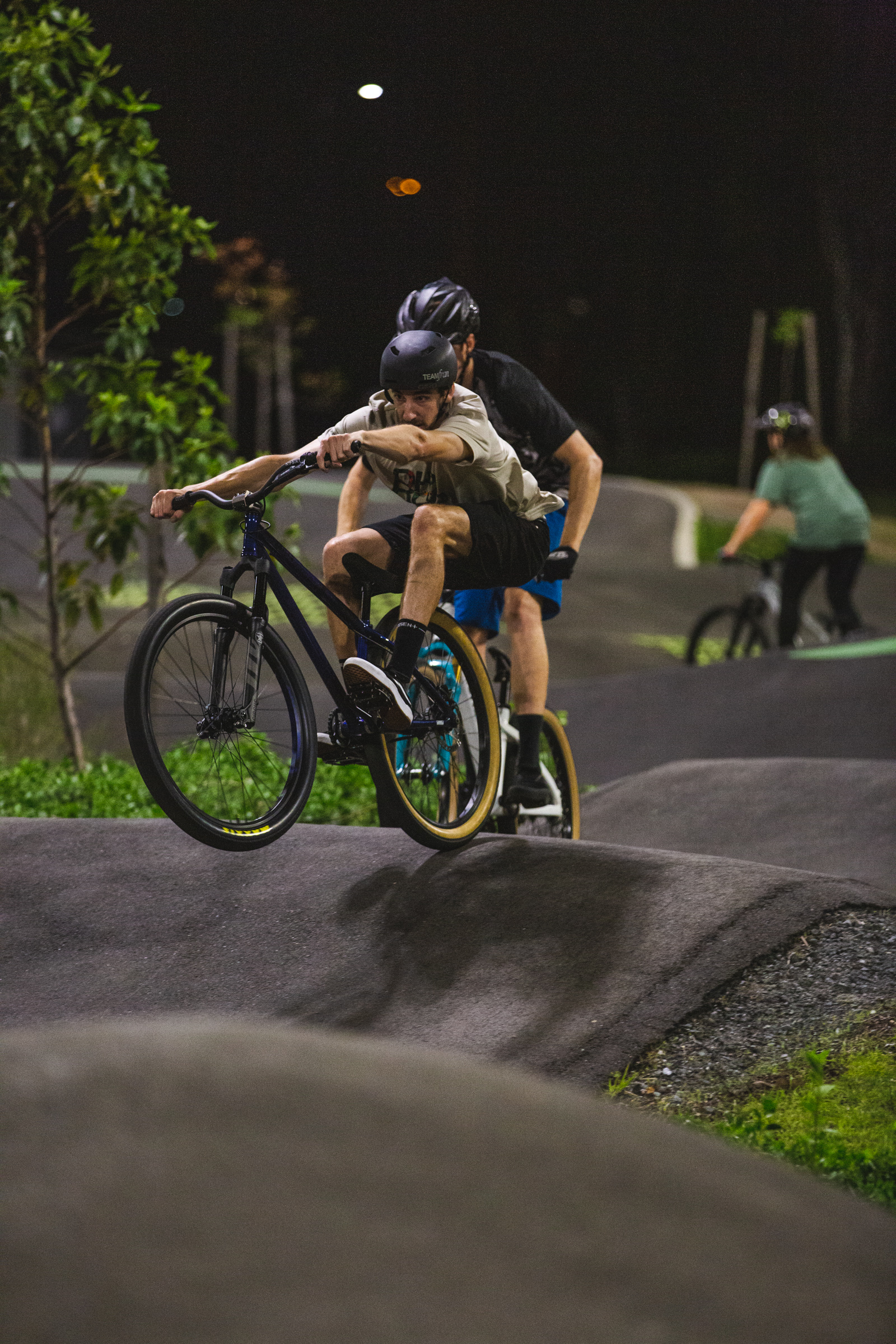
Pump Tracks work for everyone:
That is not to say that pump tracks do not cater to riders of all skill levels, it is in fact quite the opposite. On any given night you will find a wide variety of riders sitting above the starting mound awaiting their turn, from former World Cup hopefuls to young shredders to beginners and all riders in between, the pump track is all inclusive. This is thanks to the basis of their design. Where BMX tracks require fitness and strength to pedal out of the turns and across the flat bottoms before hitting the features, pump tracks are a pedal free affair. Combine this with smooth transitions and lack of intimidating gap jumps you would find at a dirt jump spot and you can see why pump tracks are the perfect place for any rider to hone their skills. The ultimate example of this is how often you see parents and their kids at the pump track riding together.
The same can be said for the ideal pump track bike. While entry level enduro and downhill bikes can cost you well over $3,000 a well sorted entry level dirt jump bike should be less than a grand. Many bicycle manufacturers cater to the hardtail market, with the majority of their frames being made from chromoly steel. The NS Metropolis is a great example of this. If a brand-new bike does not fit the budget there are always bargains to be found on your local buy-sell-swap pages. A once loved hardtail can cost you as little as a few hundred dollars and will be more than enough to get you going at your local spot. On the other end of the spectrum it seems that many of my local crew decided to not only dust off their once loved hardtails, but also give them a bit of a birthday in the process. The end result is quite a few hardtails rolling in on a Tuesday night which have specifications and build quality that would have not led them to be amiss lining up on a 4X World Cup gate start next to Jared Graves a decade ago.
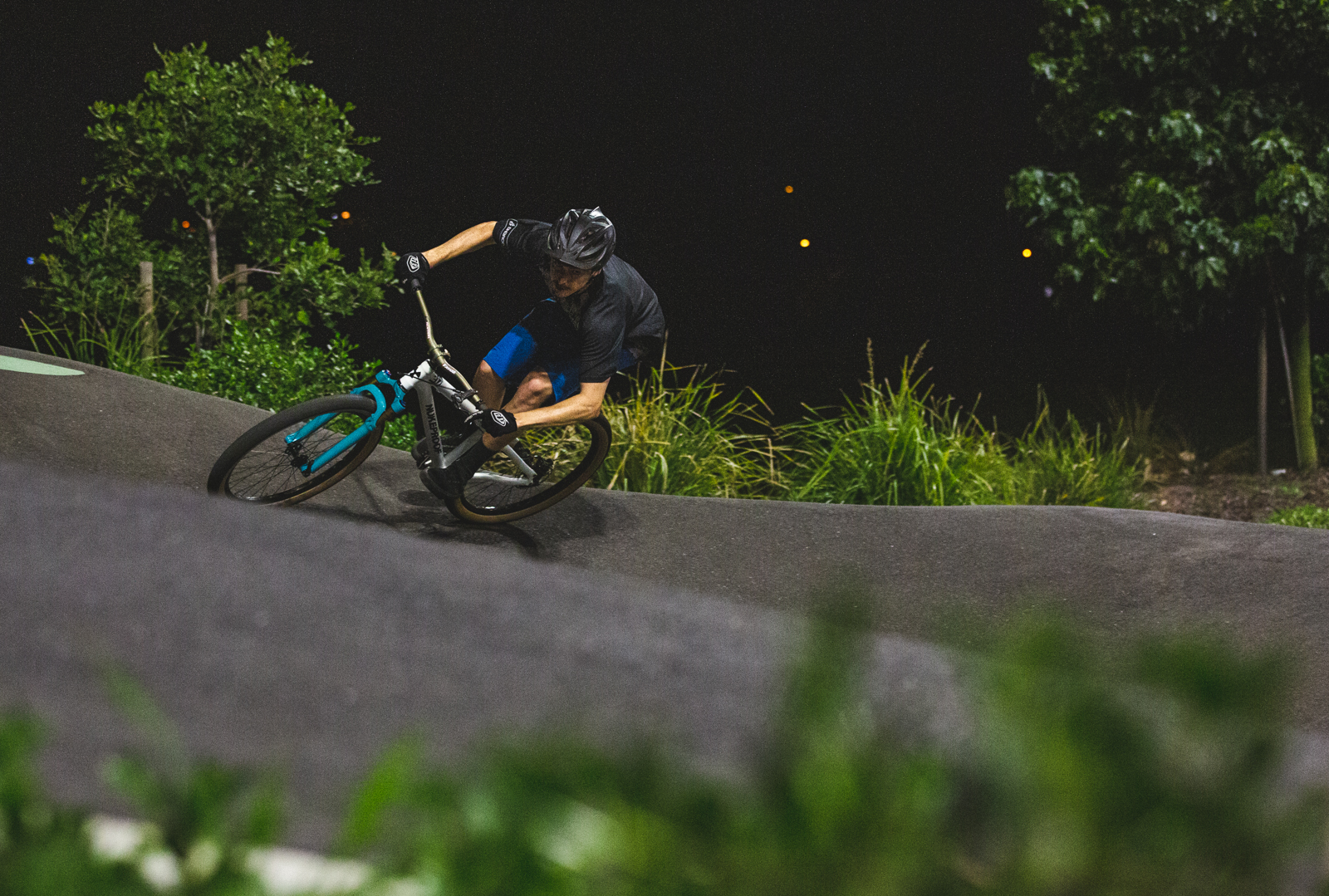
It’s safe to say that you will find me and my riding buddies meeting at the Darra pump track on Tuesday nights for the foreseeable future. The ability to get quality time riding your bike with a good group of friends cannot be understated, and the skills and fitness benefits are a noteworthy side effect. If you were to close your eyes and listen to the sounds of the freehubs ticking, the rear tyres skidding, the hooting and the hollering, you could be mistaken to think there is a bunch of kids out there riding. It’s almost like we are all 13 again.



